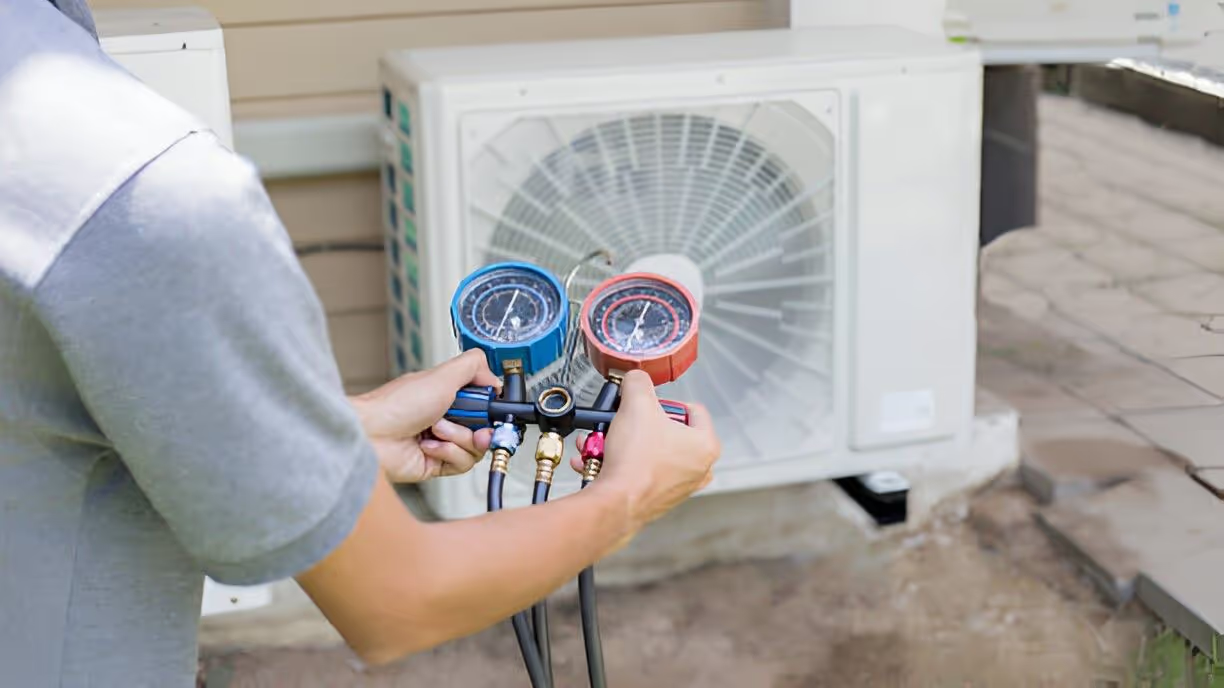AC Tune-Up in Auburndale, FL


Why a seasonal AC tune-up matters in Auburndale, FL
Auburndale’s climate features long cooling seasons, high humidity, and significant pollen and dust loads that clog filters and coils. These conditions increase run time and stress on compressors, fans, and electrical components. Regular tune-ups:
- Reduce the chance of mid-summer failures when outdoor temperatures and cooling demand peak.
- Improve energy efficiency, which matters in a region with high air-conditioning usage.
- Lower humidity and the likelihood of mold and mildew in ductwork and coils.
- Detect corrosion and storm-related damage early, especially after severe weather.
Common AC problems in Auburndale homes
Technicians see recurring issues in central Florida homes that tune-ups are designed to catch:
- Dirty evaporator or condenser coils reducing heat transfer and efficiency.
- Low refrigerant levels from leaks, causing poor cooling and higher run times.
- Clogged condensate drains leading to water backups, stains, or indoor humidity problems.
- Worn fan motors, capacitors, or starters that cause noisy operation or failure to start.
- Thermostat inaccuracies or calibration drift that create uneven comfort or short cycling.
- Restricted airflow from dirty filters, blocked return vents, or failing blower motors.
- Corroded electrical connections and contactors accelerated by humidity.
Standard seasonal AC tune-up checklist
A professional tune-up follows a methodical checklist to restore performance and safety. Standard items include:
- Thermostat inspection and calibration to ensure accurate temperature control.
- Refrigerant level check and pressure testing; inspection for visible leaks.
- Evaporator coil and condenser coil cleaning to restore heat exchange efficiency.
- Condensate drain inspection and clearing to prevent backups and microbial growth.
- Air filter check and replacement recommendation to improve airflow and indoor air quality.
- Lubrication of motors and moving parts where applicable to reduce wear.
- Electrical system review: tighten connections, check capacitors, contactors, breakers, and fuses.
- Fan motor, blower wheel, and belt inspection and cleaning or adjustment.
- Compressor and system performance tests including amperage and voltage readings.
- Safety control checks including high/low pressure switches and thermostat safety functions.
- Overall system airflow measurement and static pressure assessment when needed.
- A written summary of findings and recommended repairs or parts replacement.
Diagnostic and service process — what happens during the visit
A tune-up is both an inspection and a targeted maintenance service. Typical steps:
- Visual inspection of outdoor unit and indoor air handler for damage from weather, pests, or debris.
- System power and operational check: technician runs the system and notes unusual noises, vibration, or odors.
- Performance measurements: temperature split across evaporator coil, refrigerant pressures, airflow checks, and electrical load readings.
- Cleaning: brushes and coil cleaner remove built-up dirt and pollen from coils; condensate pans are cleaned and drains cleared.
- Component servicing: lubricating bearings, tightening electrical terminals, and replacing or recommending worn parts.
- Reporting: technician documents findings, indicates any safety concerns, and provides maintenance notes for the homeowner.
Expect the typical residential tune-up to take about 60 to 90 minutes, depending on system age, size, and how much cleaning or diagnostic testing is required. Technicians will often leave a short maintenance report summarizing system condition and suggested next steps.
Recommended frequency for Auburndale homes
- Annual tune-up: Minimum recommended frequency for most homes, ideally performed in spring before the hottest months begin.
- Biannual tune-up: For older systems, high-use households, or homes with health-sensitive occupants, a spring and fall visit helps catch winter storm damage and post-summer wear.
- After major storms: Inspect and service the outdoor unit after high winds or flooding to check for debris, bent fins, or water damage.
Timing a tune-up in late winter or early spring ensures the system enters peak season optimized for efficiency and reliability. A follow-up in early fall can be beneficial if the system ran continuously through summer.
Benefits homeowners should expect from a tune-up
- Improved efficiency and lower energy consumption because clean coils and correct refrigerant levels let the system cool with less run time.
- Fewer unexpected breakdowns during extreme heat due to preventative detection of worn parts.
- Better indoor comfort with steadier temperatures and improved humidity control.
- Longer equipment life from reduced strain on compressors, fans, and motors.
- Improved indoor air quality by removing dust, pollen, and microbial growth from coils and drains.
- Clear documentation of system health that helps prioritize repairs and budget for replacements.
Practical tips between tune-ups
- Change or clean air filters every 1 to 3 months during heavy use to maintain airflow and protect coils.
- Keep the outdoor unit clear of leaves, grass clippings, and obstructions; maintain 2 to 3 feet of clearance for airflow.
- Program the thermostat to avoid short cycling and maintain consistent setpoints when home.
- Watch for telltale signs of trouble: reduced cooling, higher energy bills, unusual noises, or water near the indoor unit.
- After storms, visually inspect the outdoor unit for debris or damage before running the system.
A seasonal AC tune-up in Auburndale, FL is a practical, results-focused maintenance step that addresses local climate stresses and protects home comfort through the hottest months. Regular preventive care keeps systems running efficiently, reduces repair risk, and supports healthier indoor air during the extended cooling season.
Service Areas


